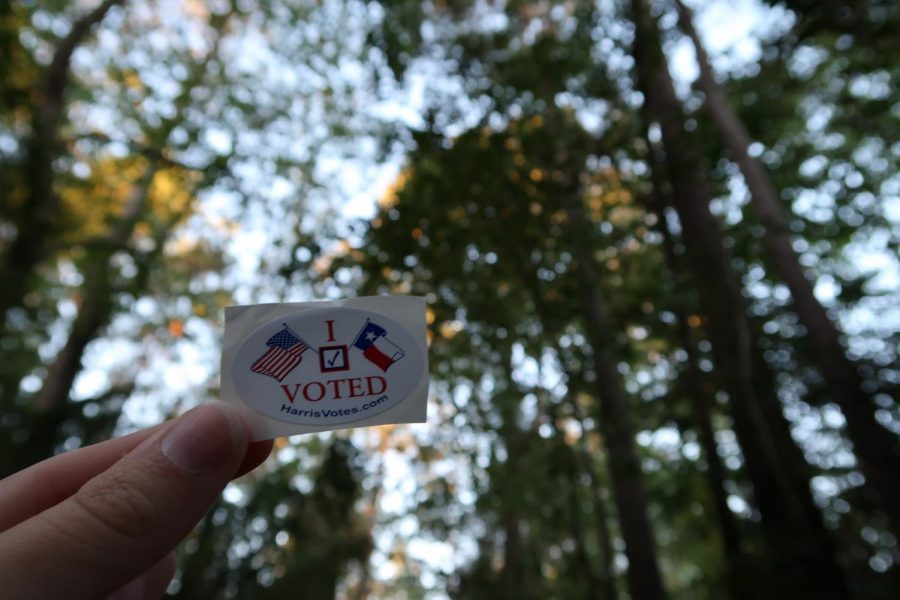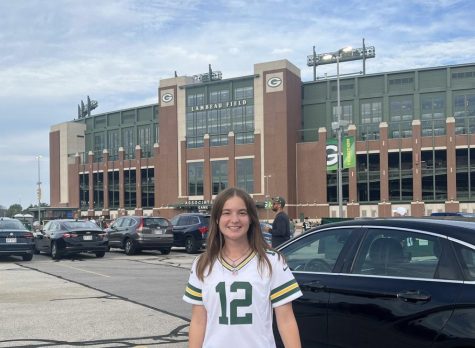Evolving Scene of Voter Engagement
A 2020 Harris County “I Voted” sticker.
October 31, 2020
The push to get out the vote in the 2020 election is seemingly stronger than ever before with Harris County voters are coming out in record numbers. In the first seven days of 2020’s early voting, the county amassed 73% of the entire 2016 early voting turnout and 52% of the total 2016 election turnout. Keep reading to hear about current voter encouragement methods and how they have evolved and expanded with the growth of technology.
Yard signs, postcards, and block walking are some forms of traditional, tried and true campaigning. Though they are still popular today, more forms of campaigning and general encouragement to vote have emerged over the past several years. The rise of technology has opened a whole new door to the techniques of voter engagement.
Social media has had a growing influence on people in the past several years. From 2016 to 2018, Pew Research reported a 2% increase in Americans sourcing their news from social media. According to the 2018 study, 20% of Americans get news mainly from social media, as compared to sources such as television and print newspapers. With such a broad reach, it is no surprise that social media would also affect voter behavior.
Instagram users may open the app to see a notification linking the Facebook Voting brand Information Center displaying different state-specific voting options, voter registration confirmation, facts about voting, and even find opportunities to work the polls. Influencers can also share voting-themed stickers with Instagram’s story feature.
Many celebrities, on and off social media, use their platforms to share their views and endorse candidates. Celebrity endorsements for products generally garner extra attention and cause people to have stronger behavioral responses to the advertisements. Well-known figures are often used in advertising for brands, so it makes sense that politically concerned celebrities would wish to project their opinions through political endorsement. This can be seen in many ways, from Kid Rock performing at a Trump rally to Taylor Swift posting pictures of homemade Biden Harris cookies to her socials. Though it is difficult to measure the effects of these endorsements, there is some kind of transferable evidence involving Oprah and her endorsement of Obama in the 2008 election to refer to. Craig Garthwaite and Timothy J. Moore tracked the spikes in sales that books from Oprah’s book club experienced once they were selected as a means to observe her influence. The books Anna Karenina and Love in the Time of Cholera jumped over 100-fold in sales after being chosen. The estimated reach of Oprah’s influence led Garthwaite and Moore to theorize that through her magazine and daily talk, she influenced about 2.5% of votes casted by Democrats. This is just one example of how celebrity influence can alter elections, not only through direct votes, but also through indirect factors like campaign support and volunteers.
Through celebrity endorsement and social media engagement, among other factors, the 2020 election has broken records. Technology and celebrity influence will continue to impact campaigning and the results of elections for years to come, surely evolving in countless other ways.
Sources
https://link.springer.com/article/10.1007/s11747-016-0503-8



